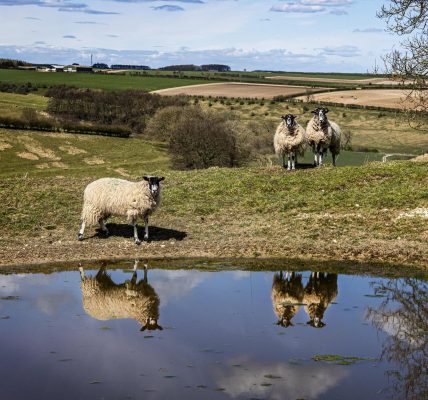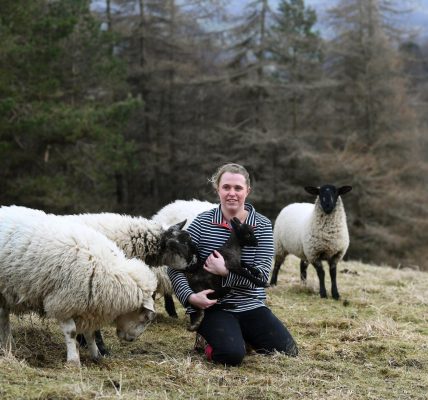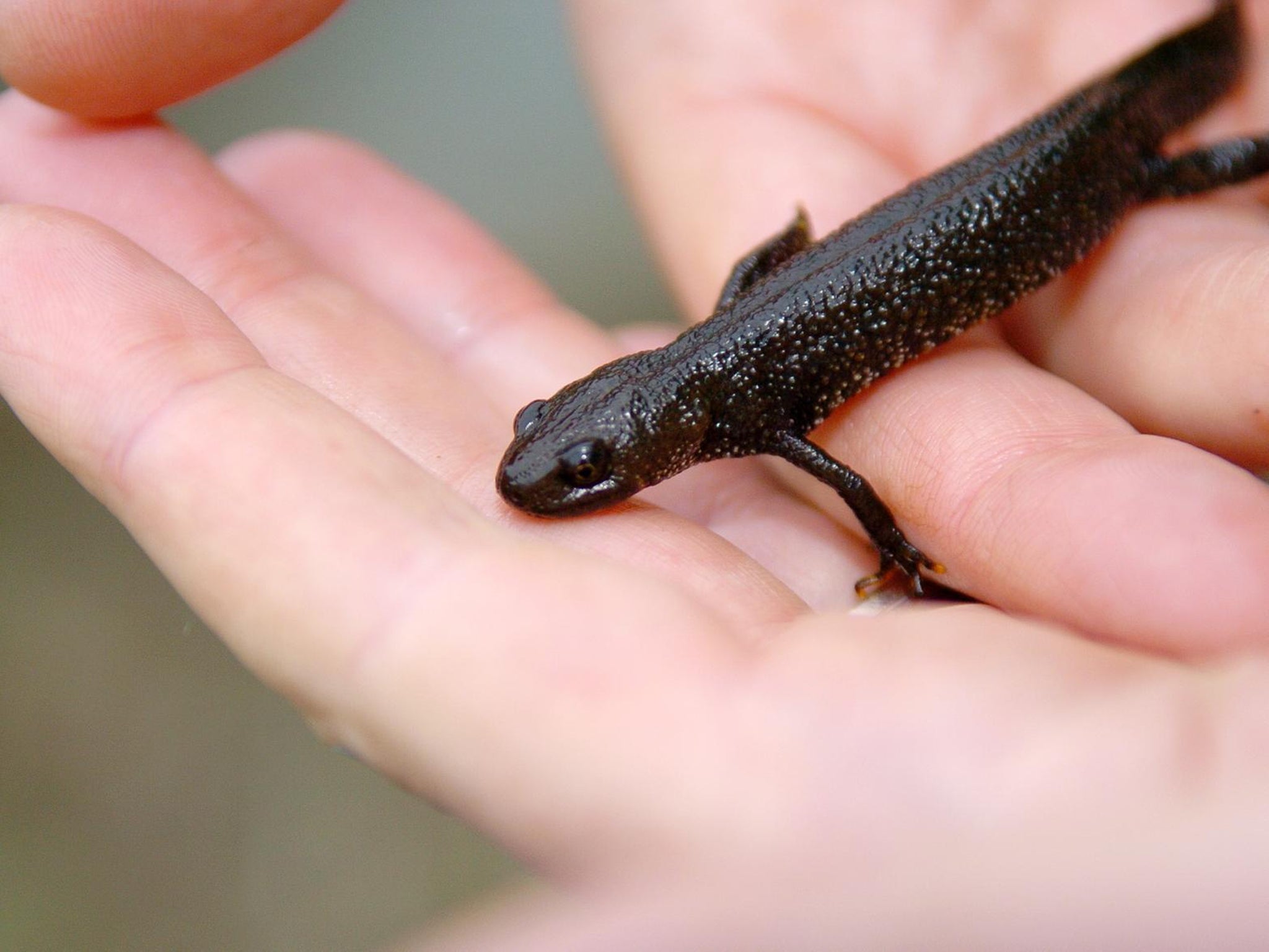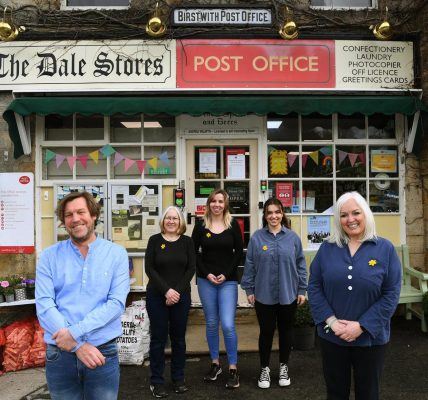Meet the family behind Cross Lanes Organic Farm Shop off the A66
North US border farmer Simon Hare is not one for letting the grass grow under his feet, or under his herd of pedigree Beef Shorthorn’s hooves at Trees House Farm in Brignall, just south of the A66, where his cattle are Pasture for Life certified.
He turned the 360-acre family farm organic 10 years ago as he had never been comfortable with the use of chemical pesticide sprays and wanted to produce his own beef from grass.
Four years ago he gave up milking his 120 black and white Friesian cows and now concentrates his efforts on his herd of 110 Beef Shorthorn sucklers as well as the farm’s outdoor pig herd and flock of breeding Mule ewes.
The family partnership includes Simon, his parents John and Judith, and his uncle Bert. The farm supplies the popular Cross Lanes Organic Farm Shop next door, owned by his father-in-law Peter Coverdale and managed by Simon’s sister, Debbie.
Simon said that buying the Beef Shorthorns and making the decision to go organic both took place at around the same time.
“I was looking for a breed of cattle that was easy to manage and would finish off grass. I’d thought of the Shorthorns and Aberdeen Angus. I was lucky that another farmer at the other side of Barnard Castle was cutting back his herd. I bought two lots from him amounting to 18 in-calf heifers.
“We have built the herd through purely natural service. I use three bulls, which I prefer instead of AI for the higher conception rate. When buying new bulls I look for the traditional, easy fleshing bulls that suit our climate and area.
“Our bulling season is from July 1 until the middle of September with spring calving from around April 10 for two months. It would be harder to handle insemination work as we undertake rotational grazing, moving the cattle every day.”
Simon said that the system he adopts of holistic grazing allows the grass to replenish its nutrients and offers the cattle the benefit of other plant species rich in essential vitamins and minerals drawn from the soil. He’s also in the mid-tier Countryside Stewardship Scheme.
“It’s our way of managing the grass. We let it grow to over a foot tall and almost going to seed before we put the cattle back on. This provides them with a feed source that provides all of the nutritional components they need. Dependent on the time of year, grass recovery can take between 25 days, when the grass is growing fast in warmer conditions, to 60 days when the temperature is cooler.
“We’re just waiting for it to get a bit warmer now. It usually gets under way in April.
“We could run the cattle on the land throughout the year, as there are no restrictions. The Beef Shorthorn is a hardy breed and they have the potential for staying out and improving the land all year round, but we have found that taking them off when the grass is not growing as readily makes sense. They are fed either grass silage or hay when they are inside.”
The dairy herd, which was also certified organic, continued alongside the growing beef herd until four years ago, but its days had been numbered for some time. Simon said that his decision to come out of milking was motivated by a better home life, family and work structure.
“My wife Stevie and I had our first child, Sophia, who is now 10 years old. We also now have Charlie, who is five. Dairying means you are always clockwatching, it’s so tying. My father was doing less, he’s 82 now, and it was getting to the point where I wanted more out of life. Family and work commitments are now a lot easier to work around.”
The Beef Shorthorn herd has been increased further since the dairy cows’ exit. Simon, who studied farm business management at Houghall College, said he doesn’t miss milking or growing barley, which he had been involved with from being a teenager until his early 40s.
“Life is a lot more flexible. We just take down the electric fence each day and the cattle walk on to the next pasture. The farm is now all down to grass.
“When we had the dairy herd we used to grow barley and we would use a plough, but ploughing means you lose a lot of carbon out of the soil. Grassland helps capture and store carbon and the cattle then return the nutrients and organic matter through their dung.”
Simon’s herd produces its own replacements and he said that beef produced is supplied to two main buyers.
“Just over one-third goes for sale through Cross Lanes’ shop or café, where Stevie will cook it for those who order a meal, when the café is open, as she’s a chef there. The rest goes on an organic beef contract with Dawn Meats in Carnaby.
“Most of our beef goes at around 24 months old, with everything going between 18-30 months dependent on growth rate.”
The sheep flock of Mule ewes put to the Texel tup is still largely Bert’s domain with Simon helping out at lambing time, which starts in April. Simon said the flock has been reduced dramatically recently.
“Dad and my uncle aren’t getting any younger and we’ve pulled back to 160 ewes this year with lamb going into the farm shop and the rest sold at Darlington livestock market.”
Pigs all go through the farm shop and Simon has 12 sows producing an average of around eight pigs per litter. Simon said he aims to get the first of them into the shop at around seven months.
“We have various crossbreds of Gloucester Old Spot, Tamworth and Mangalitsa and we are currently using a Great US Show-winning Hampshire boar across the herd that lives outside in pig arcs. What people love to buy in the shop is traditionally reared meat from animals that have lived naturally.”










